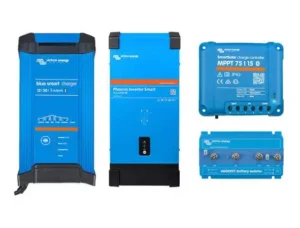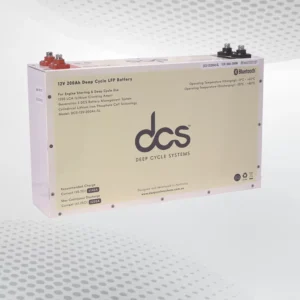When it comes to maintaining a healthy and comfortable home, the quality of your indoor air often takes a back seat. But with increasing concerns about pollution, allergens, and overall wellness, it’s time to shine a light on an unsung hero: the air exchanger for house. This innovative system does more than just replace stale air; it actively promotes better living conditions by enhancing airflow and improving ventilation. With advancements in technology, these exchangers offer various features and benefits tailored to meet the specific needs of residential spaces.
What is an Air Exchanger and How Does it Work
An air exchanger is a mechanical system designed to improve indoor air quality by continually replacing stale, contaminated air with fresh outdoor air. It operates through a process known as ventilation. The unit typically consists of two fans and a heat exchange core. One fan draws in fresh outside air while the other expels stale indoor air. As these two streams pass through the heat exchange core, they transfer temperature without mixing, allowing your home to maintain energy efficiency.
This means you get cleaner air without sacrificing warmth during winter or coolness in summer. By effectively balancing airflow, it can significantly enhance comfort levels throughout your living spaces. In essence, it’s like having a breath of fresh air circulating in your home at all times! The exchanger works by using two separate streams of air, one from inside the home and one from outside.
The stale indoor air is drawn into the unit through a vent in the house, usually located in a central area like the hallway. The outdoor air is also drawn into the unit through another vent, typically located on the exterior of the house. Inside the exchanger, there is a heat exchange core made up of many thin plates or tubes. These plates or tubes are designed to transfer heat between the two airstreams without allowing them to mix. As a result, heat from the outgoing stale air is transferred to the incoming fresh air, making it easier to maintain a comfortable temperature inside your home.
Improved Indoor Air Quality
Indoor air quality is crucial for a healthy living environment. A exchanger significantly enhances it by continuously replacing stale indoor air with fresh outdoor air. This process helps to dilute and remove harmful contaminants like dust, pollen, and volatile organic compounds (VOCs). As these pollutants are expelled, the overall atmosphere becomes cleaner and more breathable.
People suffering from allergies or asthma often notice improvements in their symptoms after using exchanger. The system filters out irritants that can trigger discomfort or respiratory issues. Moreover, maintaining optimal humidity levels contributes to better health. Excess moisture creates the perfect breeding ground for mold and mildew. An efficient exchange unit helps regulate humidity, making your home not only fresher but also safer for everyone inside.
It can also help lower your energy bills. As it draws in fresh outdoor air, the system heats or cools it to match the temperature of the indoor air before distributing it throughout the house. As a result, your HVAC system doesn’t have to work as hard to maintain a comfortable temperature. This process helps reduce energy consumption and, ultimately, your utility costs.
Energy Efficiency and Cost Savings with Air Exchange Unit
An air exchange unit can enhance energy efficiency. By continuously circulating fresh outdoor air while expelling stale indoor air, it helps maintain a balanced environment without overworking your HVAC system. This process means your heating and cooling units don’t have to work as hard to regulate temperatures. With advancements in technology, exchangers offer various features and benefits tailored to meet the specific needs of residential spaces. A well-functioning unit reduces energy consumption, which translates into lower utility bills. Moreover, many modern exchangers come with heat recovery systems.
These systems capture the warmth from outgoing air and transfer it to incoming cold air during winter months, further enhancing savings on heating costs. In warmer seasons, they help temper hot outdoor air before it enters your home. This dual benefit maximizes comfort while minimizing energy expenses throughout the year.
In addition to energy efficiency, exchangers also improve indoor air quality. By constantly circulating fresh air, they reduce the buildup of pollutants and allergens such as dust, smoke, and pet dander. This is especially beneficial for those with respiratory issues or allergies. The initial cost of installing exchanger may seem high, but the long-term savings on energy bills will make up for it. Plus, many utility companies offer rebates or incentives for installing energy-efficient systems in homes.
Reduced Humidity and Moisture Control
High humidity levels can create an uncomfortable home environment. It combats this by effectively regulating moisture indoors. This system continually replaces stale, humid air with fresh, drier outdoor air. As a result, it helps maintain optimal humidity levels throughout your house. Excess moisture not only feels unpleasant but can also lead to mold and mildew growth. These issues can damage walls and belongings while posing health risks to residents.
With an efficient air-exchange unit, you’ll notice improved comfort levels in every room. It works quietly behind the scenes, ensuring your living space remains pleasant without the need for dehumidifiers or excessive ventilation. Additionally, controlling humidity contributes to energy savings since HVAC systems don’t have to work as hard to maintain desired temperatures. Enjoying a balanced indoor climate becomes easier when you invest in an effective solution like this one.
Noise Reduction with Air Exchange System
Noise can be an unwelcome guest in any home. It disrupts tranquility and interrupts daily activities. An air exchange system helps combat this issue. By incorporating sound-dampening features, these systems create a quieter indoor environment. They work by drawing in fresh outdoor air while expelling stale air without the usual noise associated with traditional ventilation methods. Moreover, they reduce reliance on noisy fans and open windows that can amplify external sounds. This keeps your living spaces peaceful, allowing for better focus and relaxation.
Families with children or those who work from home particularly benefit from this feature. A serene atmosphere enhances productivity and comfort throughout the day, creating a more enjoyable living experience overall. Choosing an efficient exchanger means prioritizing peace alongside optimal airflow in your house. Indoor air quality is a crucial aspect of maintaining a healthy home environment. With exchange system, you can enjoy improved air quality year-round. These systems constantly circulate fresh outdoor air into your home, while expelling stale and potentially contaminated indoor air.
Residential Air Exchanger is an Eco-Friendly Option
Choosing a residential air exchanger is a proactive step towards sustainability. These systems efficiently circulate fresh outdoor air while minimizing energy expenditure. By recovering heat during the colder months and cooling in the summer, they reduce dependency on traditional heating and cooling methods. These exchangers also significantly lower greenhouse gas emissions. They promote better indoor environments without relying heavily on energy-intensive solutions. This translates to less strain on power plants and reduced fossil fuel consumption.
Moreover, many modern models are designed with eco-friendly materials, further enhancing their green credentials. Investing in this technology not only benefits your home but also contributes to a healthier planet for future generations. Homeowners can feel good knowing they’re making choices that align with environmental responsibility while still enjoying comfortable living spaces year-round.
In addition to being eco-friendly, residential exchangers offer multiple other benefits:
· Improved Indoor Air Quality
One of the main benefits of exchanger is its ability to improve indoor air quality. By bringing in fresh outdoor air and filtering out pollutants, allergens, and other contaminants, these systems help create a healthier living environment for you and your family.
· Reduced Humidity Levels
These exchangers can also help reduce humidity levels in your home. This is particularly useful in areas with high humidity, as excess moisture can lead to mold growth and other issues. By exchanging humid indoor air with drier outdoor air, these systems can help maintain a comfortable level of humidity in your home.
· Energy Savings
As mentioned earlier, residential exchangers are energy-efficient solutions for improving indoor air quality. By recovering heat or coolness from the exchanged air, these systems can reduce the load on your heating and cooling systems, resulting in energy savings and lower utility bills.
· Odour Control
Air-exchangers also help control unpleasant odours in your home by constantly circulating fresh outdoor air throughout your living spaces. This is especially beneficial for homes with pets or smokers.
Factors to Consider Before Installing an Air-Exchanger
Before installing an air-exchanger for the house, several factors merit careful consideration. Evaluate your home’s size and layout first. Larger spaces may require more robust systems to ensure effective airflow throughout. Next, assess your local climate. In regions with extreme weather changes, a unit designed for varying temperatures will work best. Consider existing ventilation systems too. Compatibility is crucial; retrofitting can be costly if adjustments are needed. Energy efficiency ratings should also be on your checklist. Look for units that offer optimal performance without driving up energy bills.
Think about maintenance requirements. Some models demand frequent upkeep while others operate with minimal intervention. By examining these aspects before installation, you’ll set the stage for a successful air exchange experience in your home.
Conclusion
Considering the numerous advantages of an air exchanger for house, it’s clear why more homeowners are choosing this option. Enhanced indoor air quality and energy efficiency are just a few highlights. The benefits extend beyond comfort. Improved health, reduced humidity, and elimination of odors contribute to a better living environment. Investing in an air exchange for house can also lead to significant cost savings over time. It’s not only about your home but also about making eco-friendly choices that benefit the planet. Before making any decisions, evaluating factors such as installation requirements and maintenance is crucial.
FAQS
What Is The Primary Function Of An Air Exchanger For House?
An air exchanger primarily serves to improve indoor air quality by replacing stale indoor air with fresh outdoor air while conserving energy. It effectively balances ventilation and insulation within your living space.
How Does Installing An Air-Exchanger Affect My Utility Bills?
While there might be a small increase in costs associated with running the unit, most homeowners experience significant savings on heating and cooling expenses over time due to improved energy efficiency.
Can I Install An Air-Exchanger Myself Or Should I Hire A Professional?
While DIY installation is possible for those with technical skills, hiring a professional ensures proper installation and optimal performance of your system. This can also extend the life of the equipment.
Do I Need Regular Maintenance For My Air-Exchanger?
Yes, routine maintenance is essential for keeping your unit functioning properly. Regular filter changes and inspections will help maintain good airflow and prolong its lifespan.
| Related Business Listings |
| Contact Directory |
| Local Business Profiles |




